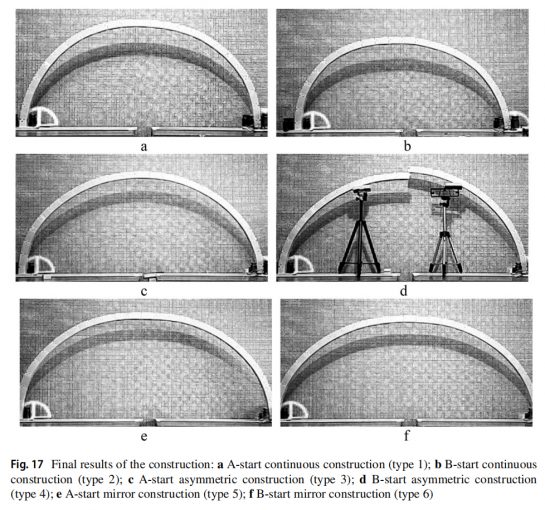
Journal title : A Modular Interlocking Element for Material-Efficient Stereotomy Construction
Author : Nabila Affif, Nur Zahrotunnisaa Zagi, Agus Hariyadi, Annisa P. Cinderakasih
Accepted at August 20, 2021. Published online at Nexus Network Journal, September 17, 2021
https://doi.org/10.1007/s00004-021-00577-6
Abstract :
In the last decade, research interest in digital stereotomy has been renewed, with efficiency as a popular objective. However, along with a mainstream focus on full customization, comes a paradox of efficient design yet inefficient fabrication. Provoked by this situation, the potential of modular stereotomy is explored here. By utilizing a parametric design approach and rapid additive prototyping method, sequential experiments were executed to test seventy variations of units. As a result, a clear workflow and an optimized design were generated and used to form a modular stereotomy construction. Finally, efficiency was achieved from three standpoints: main material efficiency through complete modularity, supporting material efficiency through total elimination of shims and up to 91% reduction in falsework, and material use-value maximization through an easy assembly of form and a selection of up to six different constructional strategies to build arches with similar shape and volume.
Research Methodologies :
This research employs an experimental geometry-based approach where the main focus is placed on the quantitative parameters of the geometry, such as the ratio of the dimensions of the general form, the joint, the positioning of elements, and its impact on the stability of the structure rather on the force path and flow. Here, several data collection and analysis stages can be broadly grouped into two major phases, namely study case and experimental research, each with their respective methods.
Result and Conclusion :
The results of this research are significant as a proof-of-concept that the modular stereotomy approach has great potential and is highly competitive compared to the other bespoke-oriented alternatives in the field. With newly developed logical workflows and form and structure relationships from modular stereotomy, results from this research are expected to forge the path towards digital stereotomy that is more efficient, familiar, and technology-ready for a vast and swift application. With regard to future developments of the results discussed in this study, there is a potential to further investigate the modules’ adaptivity in relation to increasing the flexibility of the construction’s form-finding process and construction strategy. Referring to the early stage of model development, the breakdown of units into detachable elements is based not only on simplification of fabrication but also on the possibility of a mix coupling between different elements.
